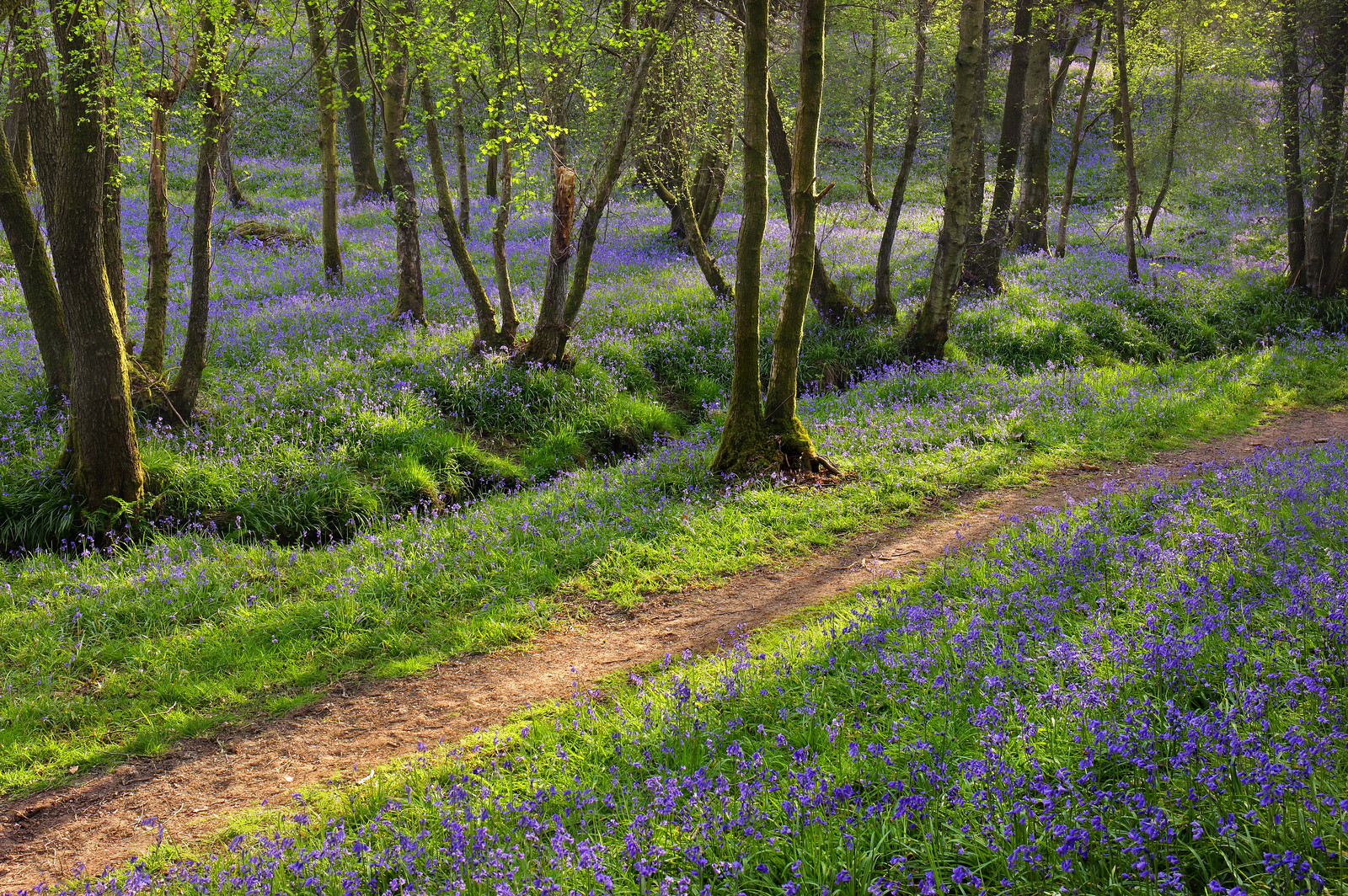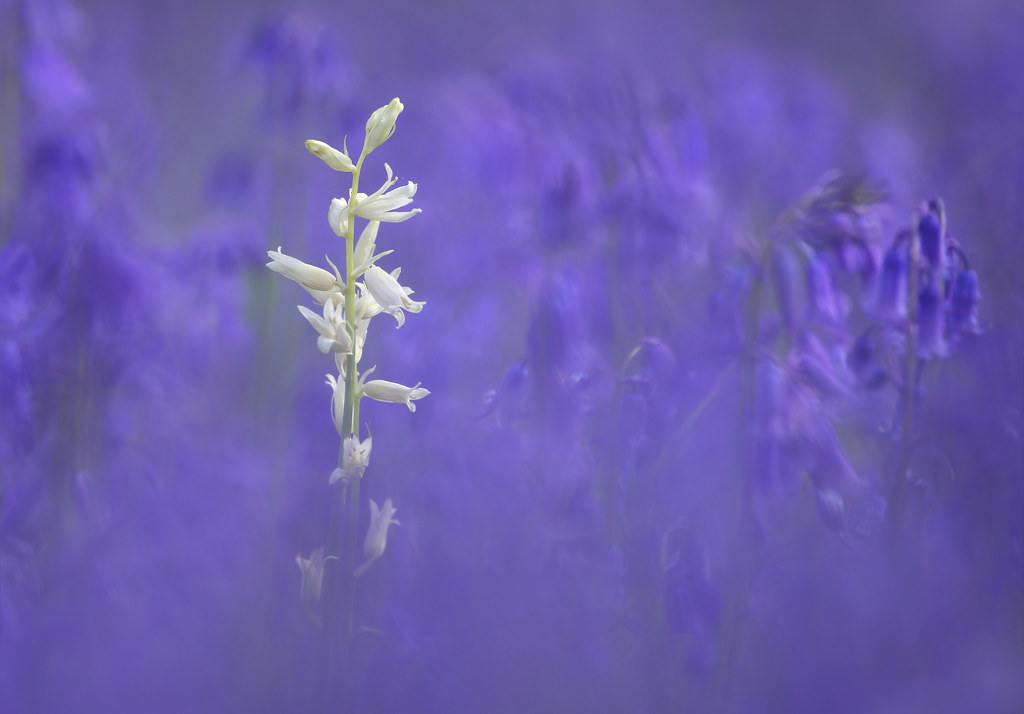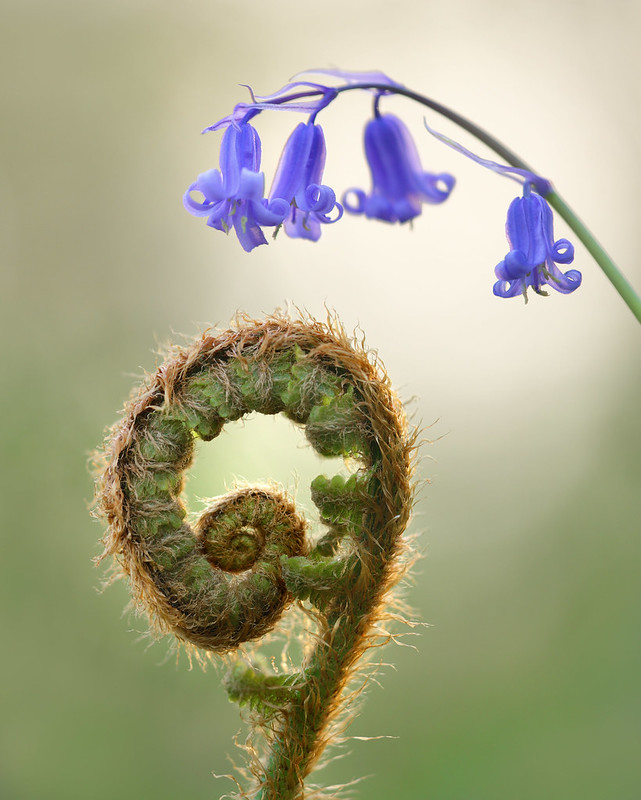BLUEBELLS 2016
I always take a week off every year to photograph what I regard as the symbolic end of winter - when bare, sorry looking woodlands are transformed by a dazzling combination of vivid bluebells and fresh green leaves. Winter is a prison of introspection and alienation from my preferred outdoor life. Entering a bluebell wood in late April is my first taste of freedom in several months. I can become completely absorbed.
But while it is easy to photograph bluebells, it is difficult to photograph them well. Many photographers get carried away, giving little thought to composition, light and perspective and are unsurprisingly disappointed with their results. Bluebells are delicate flowers, which show up best in early morning or late evening sunshine. Flower heads are quite widely spaced apart, requiring standard to long focal lengths to compress the perspective. High levels of contrast in bluebell woods presents a challenge for exposure. To correct this issue, I use a soft edge neutral density graduated filter. Foliage is highly reflective and can make images look washed out. A circular polariser filter intensifies colours by eliminating unwanted reflections. Consistent colour temperature is preferable, therefore I stick to 5200K. It is also important to pay attention to the RGB histogram, ensuring that the blue and green channels aren't clipped.
I spend a lot of time searching for eye-catching and unusual features and even longer trying to get the perfect blend of composition, balance and light. I'm not afraid to make mistakes - the photo of an unusually shaped Hornbeam tree took over 100 exposures and 90 minutes to get right. The first shots were too tightly composed. When I placed my camera five metres back, I was able to retain the strong tree element, while increasing the bluebell content. By this time, the light had improved and I finally realised I'd got everything right. When I spotted the emerging bluebells seen in the square crop, I found that a very low perspective included the horizon, but when I increased the camera elevation, I lost the continuous blur. Only at just the right level did the bluebells stand out from the out-of-focus sea of blue. Sometimes I don't realise what is right until I've tried everything.
But while it is easy to photograph bluebells, it is difficult to photograph them well. Many photographers get carried away, giving little thought to composition, light and perspective and are unsurprisingly disappointed with their results. Bluebells are delicate flowers, which show up best in early morning or late evening sunshine. Flower heads are quite widely spaced apart, requiring standard to long focal lengths to compress the perspective. High levels of contrast in bluebell woods presents a challenge for exposure. To correct this issue, I use a soft edge neutral density graduated filter. Foliage is highly reflective and can make images look washed out. A circular polariser filter intensifies colours by eliminating unwanted reflections. Consistent colour temperature is preferable, therefore I stick to 5200K. It is also important to pay attention to the RGB histogram, ensuring that the blue and green channels aren't clipped.
I spend a lot of time searching for eye-catching and unusual features and even longer trying to get the perfect blend of composition, balance and light. I'm not afraid to make mistakes - the photo of an unusually shaped Hornbeam tree took over 100 exposures and 90 minutes to get right. The first shots were too tightly composed. When I placed my camera five metres back, I was able to retain the strong tree element, while increasing the bluebell content. By this time, the light had improved and I finally realised I'd got everything right. When I spotted the emerging bluebells seen in the square crop, I found that a very low perspective included the horizon, but when I increased the camera elevation, I lost the continuous blur. Only at just the right level did the bluebells stand out from the out-of-focus sea of blue. Sometimes I don't realise what is right until I've tried everything.
Last year, I spent the night in Dockey Wood, Buckinghamshire - Foreign Legion style - ready for the dawn light. Unfortunately, thousands of visitors cause serious damage to the flowers. In response, The National Trust has restricted access to the woodland and charges an entry fee. Therefore, Dockey Wood is no longer on my list of places to visit.
My avoidance of honeypot sites this year has a purpose. It's natural for humans to gravitate towards like-minded people, to want to fit in and be influenced by each other. This year, a group of photographers came away from a local wood with very similar or nearly identical (albeit excellent) shots. Photographers in groups tend to validate each other, but there is always an element of competition to create the best version of the same scene. I am lucky enough to know a couple, who own a 170 acre "back garden" in Mid Sussex, including a bluebell wood and stream nestled at the bottom of a valley. It is the best kept secret in Sussex. If you were driving along a country lane, you would never guess something like this was tucked away nearby.


My avoidance of honeypot sites this year has a purpose. It's natural for humans to gravitate towards like-minded people, to want to fit in and be influenced by each other. This year, a group of photographers came away from a local wood with very similar or nearly identical (albeit excellent) shots. Photographers in groups tend to validate each other, but there is always an element of competition to create the best version of the same scene. I am lucky enough to know a couple, who own a 170 acre "back garden" in Mid Sussex, including a bluebell wood and stream nestled at the bottom of a valley. It is the best kept secret in Sussex. If you were driving along a country lane, you would never guess something like this was tucked away nearby.






Comments